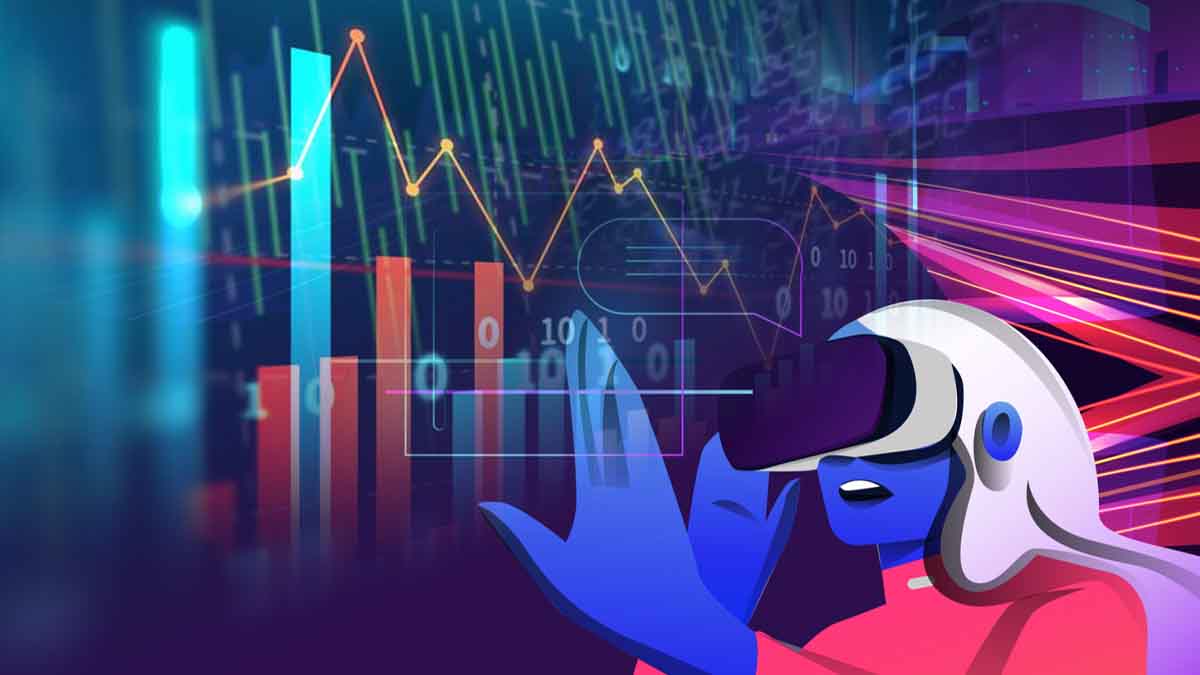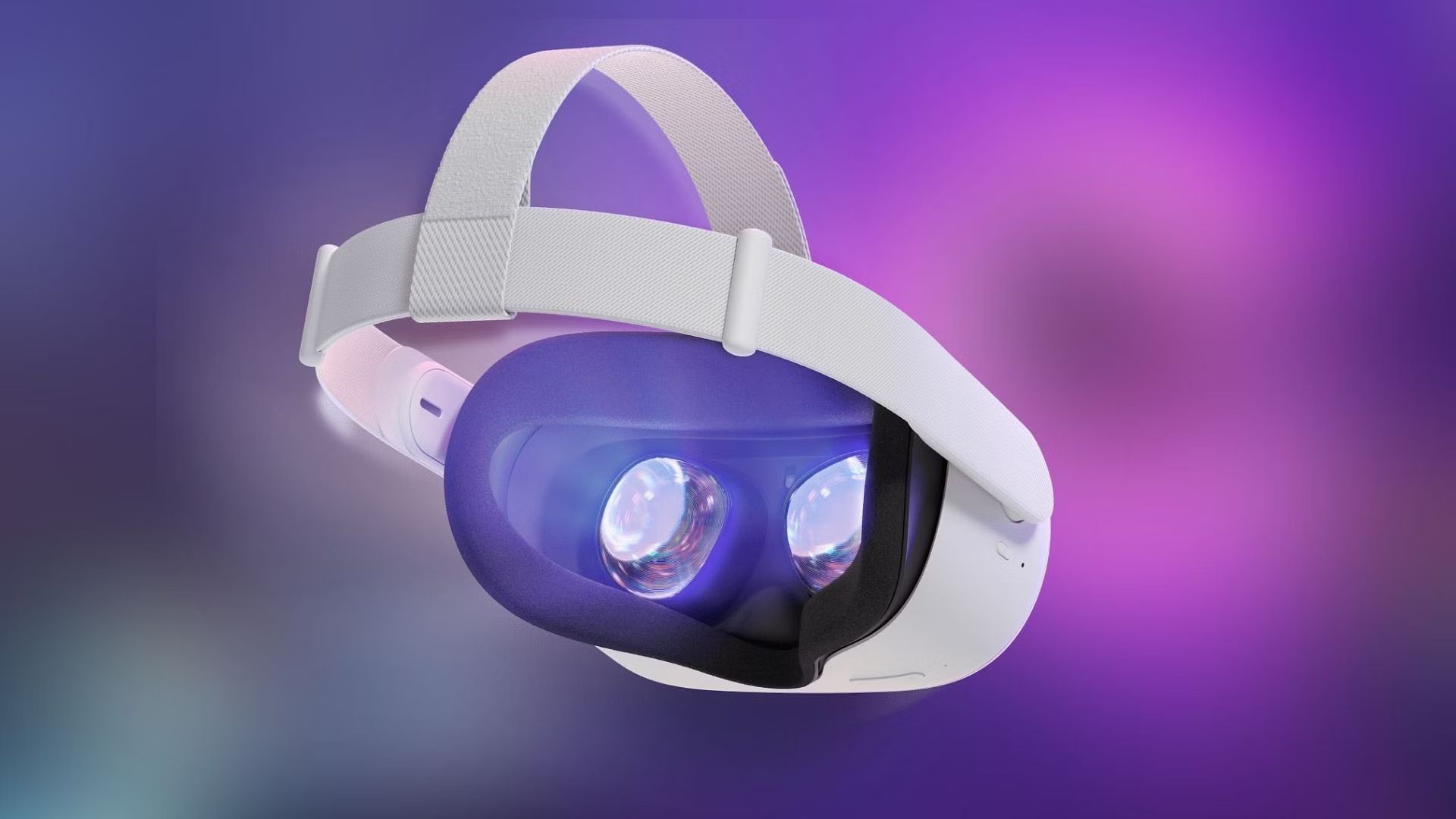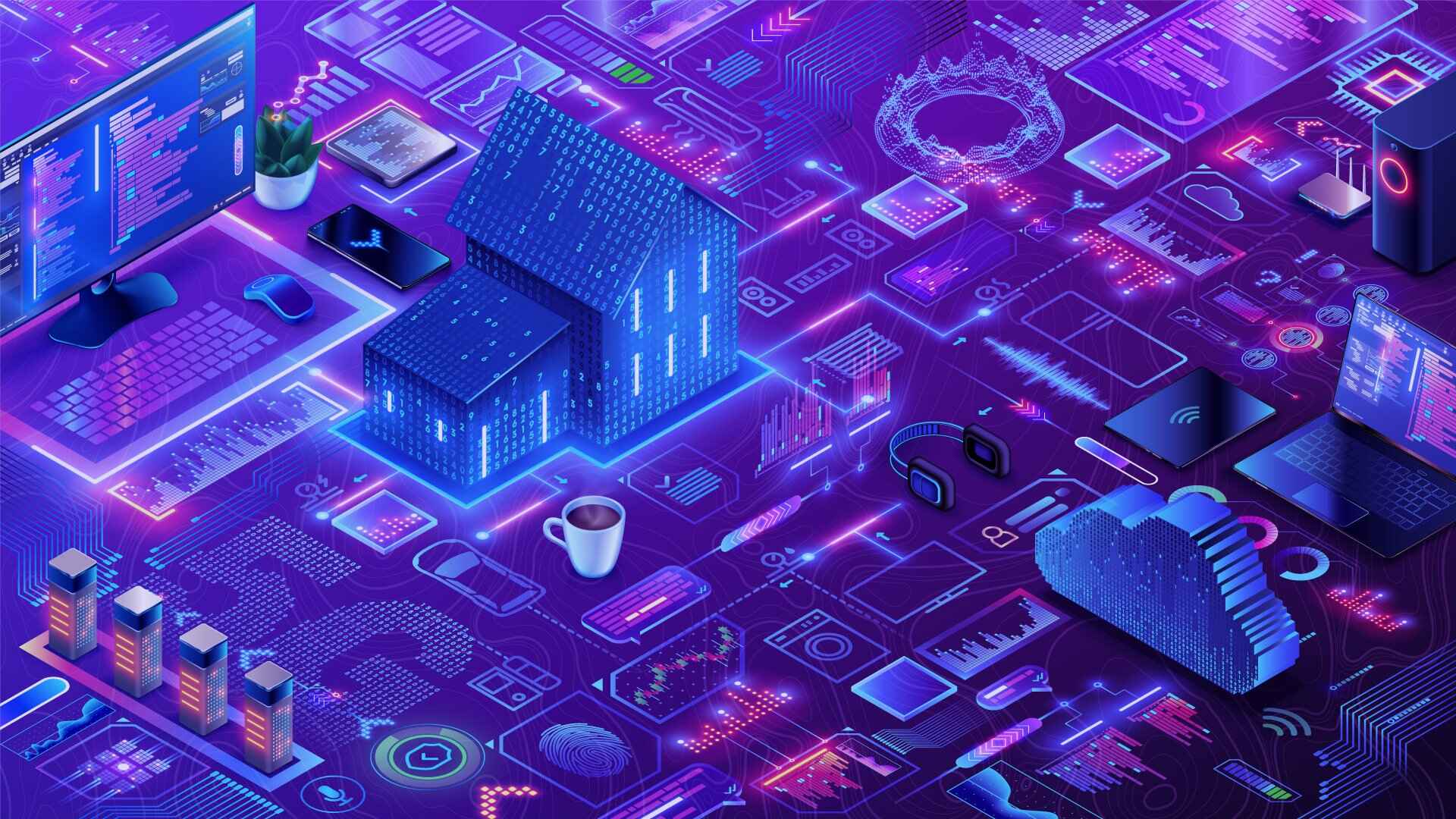Introduction
Welcome to the exciting world of the Metaverse, where virtual reality meets limitless possibilities. In this digital realm, we can explore new dimensions, engage with others, and experience a realm of boundless creativity. The concept of the Metaverse has rapidly gained attention and sparked the imagination of tech enthusiasts, entrepreneurs, and individuals eager to embrace the next level of digital interaction.
The Metaverse refers to a collective virtual shared space, existing within the internet, where users can interact with a computer-generated environment and other users in real-time. It is not just a mere extension of our physical world but rather an expansive universe that offers a parallel existence.
While the idea of the Metaverse may seem like science fiction, it is gradually becoming a tangible reality. Technological advancements in virtual reality (VR), augmented reality (AR), blockchain, and artificial intelligence (AI) have paved the way for the creation of immersive digital environments that blur the boundaries between the physical and digital realms.
The Metaverse has its roots in the virtual worlds and online gaming communities that have been around for decades. However, it has evolved into something far more intricate and interconnected. It is no longer confined to a single platform but rather a vast network of interconnected platforms and experiences that transcend individual applications and allow for seamless navigation and interaction.
The potential of the Metaverse extends beyond entertainment and gaming. It offers a new frontier for social interaction, business opportunities, and even educational experiences. As our physical interactions have become limited due to geographical and logistical constraints, the Metaverse presents a realm where distance is no longer a barrier, and connections can be fostered regardless of physical proximity.
In this article, we will delve into the world of the Metaverse, exploring its definition, evolution, visual design, immersive experiences, role of virtual reality, connectivity, social interactions, economic opportunities, and ethical considerations. So, fasten your seatbelts and get ready for a journey into the limitless possibilities of the Metaverse.
Definition of the Metaverse
The Metaverse is a term that encompasses a complex and interconnected digital universe. It refers to a virtual environment where individuals can interact with each other and computer-generated elements in real-time. It is a seamless merging of the physical and digital worlds, where users can navigate through shared spaces and engage with a variety of experiences.
Unlike traditional virtual worlds or online games, the Metaverse is not limited to a single platform or application. It is a network of interconnected virtual spaces, each with its own unique characteristics and offerings. These spaces can range from fully immersive 3D environments to augmented reality overlays in the real world.
At the core of the Metaverse is its ability to create a shared reality that transcends physical boundaries. Users are not confined to their geographical locations and can connect and interact with others from all over the globe. Through avatars or digital representations of themselves, users can communicate, collaborate, and explore together in a collaborative and immersive environment.
One of the defining features of the Metaverse is its persistence. This means that the digital universe continues to exist and evolve even when users are not actively participating. Changes made by one user can have lasting effects and can be witnessed by others who engage with the same environment later on. This creates a sense of continuity and a dynamic world that constantly evolves.
The Metaverse is also characterized by its openness and accessibility. Unlike closed platforms or closed ecosystems, the Metaverse encourages collaboration, interoperability, and the exchange of ideas and assets. It allows for the seamless integration of various technologies, applications, and content, offering users a diverse range of experiences.
While the concept of the Metaverse still continues to evolve, it is clear that it holds immense potential for various industries and domains. It serves as a playground for creativity, a hub for social interactions, and a platform for innovative business opportunities. As technology continues to advance, the boundaries of the Metaverse will expand, opening up new frontiers for exploration and discovery.
The Evolution of the Metaverse
The concept of the Metaverse has undergone significant evolution over the years. It has evolved from the early virtual worlds of the 1990s to a more interconnected and immersive digital ecosystem of today. Understanding the evolution of the Metaverse helps us grasp its potential and the possibilities it holds for the future.
The seeds of the Metaverse were sown with the emergence of virtual worlds like Second Life and online gaming communities such as World of Warcraft. These early platforms allowed users to create and explore virtual environments, interact with others, and engage in various activities. However, these experiences were limited to individual applications, lacking the connectedness of the Metaverse we envision today.
As technology advanced, the Metaverse began to take shape. With the advent of social media platforms and improved internet connectivity, individuals started to connect and communicate on a larger scale. These platforms served as precursors to the collaborative and interactive nature of the Metaverse.
The rise of virtual reality and augmented reality technologies played a significant role in the evolution of the Metaverse. VR headsets and AR overlays brought a new level of immersion and interaction. These technologies paved the way for the creation of more realistic and immersive digital environments, enabling users to explore and interact with the Metaverse in a more engaging manner.
Furthermore, the development of blockchain technology and cryptocurrencies added a new dimension to the Metaverse. Through blockchain, users can securely own and trade virtual assets, creating a decentralized and transparent economy within the Metaverse. This not only fosters economic opportunities but also enhances the sense of ownership and value within the digital realms.
The evolution of the Metaverse is an ongoing process that continues to unfold. With advancements in artificial intelligence, machine learning, and spatial computing, the boundaries of the Metaverse are expanding. The integration of these technologies allows for more realistic virtual experiences, intelligent NPCs (non-playable characters), and dynamic environments that respond to user interactions.
As the Metaverse continues to evolve, it is becoming increasingly interconnected and accessible. Individuals can now access the Metaverse from various devices and platforms, from VR headsets to smartphones. This democratization of access ensures that more people can engage with the Metaverse, creating a diverse and vibrant digital ecosystem.
With each technological advancement and innovative application, the Metaverse moves closer to its full realization. It has the potential to revolutionize industries such as entertainment, education, healthcare, and business. The future of the Metaverse holds infinite possibilities, and as technology evolves, we can only imagine the exciting experiences that await us.
The Visuals and Design of the Metaverse
The Metaverse is a realm where creativity knows no bounds, and visuals play a crucial role in shaping the immersive experience. The design of the Metaverse encompasses various elements, from the environments and avatars to the user interfaces and artistic styles, all coming together to create a captivating digital universe.
The visual aesthetics of the Metaverse can vary widely, from realistic and lifelike representations to fantastical and abstract art styles. Virtual environments within the Metaverse can recreate real-world locations, transport users to futuristic landscapes, or even depict entirely fictional realms. The level of detail and fidelity in these environments continues to improve, offering users an increasingly realistic and immersive experience.
Avatars, digital representations of users, are another crucial aspect of the visual design in the Metaverse. Users can customize their avatars to reflect their individuality and personal preferences. Whether it’s choosing their appearance, clothing, or accessories, avatars allow users to express themselves within the digital realm. The design of avatars ranges from realistic human-like figures to imaginative and fantastical creatures.
At the core of the Metaverse’s visual design lies user interface (UI) and user experience (UX) design. User interfaces are responsible for facilitating interactions and navigation within the digital realm. Clear and intuitive UI design ensures that users can easily access functionalities and engage with the Metaverse seamlessly. UX design focuses on optimizing the overall experience, ensuring that users have an enjoyable and meaningful time within the Metaverse.
Artistic styles and creative expressions also play a significant role in shaping the visuals of the Metaverse. Artists and designers contribute to the visual landscape by creating stunning landscapes, intricately designed objects, and captivating digital artwork. The Metaverse provides a platform for artists to showcase their talents, pushing the boundaries of imagination and creativity.
As technology progresses, new tools and techniques emerge that enhance the visual possibilities within the Metaverse. Real-time rendering, advanced lighting systems, and physics simulations all contribute to more immersive and visually stunning experiences. The use of virtual reality (VR) and augmented reality (AR) technologies further enhances the visual experience, allowing users to feel fully immersed in the digital environment.
Designing the visuals in the Metaverse is not just about aesthetics; it is also about creating inclusive and accessible experiences. Considerations such as color contrasts, font sizes, and interface adaptability are crucial for ensuring that users with diverse abilities can fully engage with the Metaverse.
The visual design of the Metaverse is continuously evolving, driven by advancements in technology and the creative minds of individuals contributing to its development. Through stunning visuals and immersive environments, the Metaverse captivates users, transporting them to a world where their digital experiences come to life.
The Immersive Experience of the Metaverse
The Metaverse offers a truly immersive experience that transports users into a digital world filled with endless possibilities. Through advanced technologies and interactive environments, the Metaverse creates a sense of presence, allowing users to feel fully engaged and connected within the virtual realm.
One of the primary factors contributing to the immersive experience of the Metaverse is virtual reality (VR) technology. VR headsets and motion tracking devices enable users to step into a completely immersive 3D environment, where they can interact with virtual objects and engage in virtual experiences. This level of immersion creates a heightened sense of presence, making users feel like they are truly present in the digital world.
Furthermore, augmented reality (AR) technologies also contribute to the immersive experience of the Metaverse. AR overlays digital content onto the real world, allowing users to interact with virtual objects and experiences in their physical environment. This blending of the real and virtual worlds enhances the interactivity and immersion of the Metaverse.
In addition to the visual and auditory immersion, the Metaverse leverages other senses to create a more multi-sensory experience. Haptic feedback devices and controllers provide tactile sensations, allowing users to feel the texture, weight, and movements of virtual objects. Spatial audio technologies enhance the auditory experience, providing realistic and immersive soundscapes that match the user’s position and movement in the virtual environment.
Interactivity is a key aspect of the immersive experience in the Metaverse. Users can actively engage with the virtual environment, manipulate objects, and interact with other users. Real-time interactions, such as voice chat and hand gestures, enable users to communicate and collaborate with others, fostering a sense of social presence and immersion.
Exploration and discovery are central to the immersive experience of the Metaverse. Users can venture into vast virtual landscapes, uncover hidden treasures, and embark on adventures. The ability to freely navigate and explore diverse environments adds to the sense of immersion, providing a sense of agency and discovery.
The concept of persistence within the Metaverse enhances the immersive experience. Changes made by users, such as building structures or leaving behind digital footprints, can be witnessed by others who explore the same environment later on. This sense of evolving and shared experiences adds depth and realism to the Metaverse.
Ultimately, the goal of the immersive experience in the Metaverse is to create a seamless merging of the physical and digital realms. It aims to provide users with a sense of presence, agency, and engagement within the virtual environment. As technology continues to advance, the level of immersion in the Metaverse will continue to evolve, pushing the boundaries of what is possible and captivating users in new and exciting ways.
The Role of Virtual Reality in the Metaverse
Virtual reality (VR) technology plays a pivotal role in shaping the immersive and transformative nature of the Metaverse. By combining VR with interconnected digital environments, the Metaverse provides users with a fully immersive and interactive experience, enabling them to explore, create, and interact within a virtual realm.
One of the key contributions of VR to the Metaverse is the ability to transport users to realistic and fantastical digital environments. VR headsets create a sense of presence, making users feel as if they are physically present in the virtual world. This enables users to engage with the Metaverse on a deeper level, blurring the boundaries between the physical and digital realms.
VR technology also enhances the interactions within the Metaverse. With the use of motion-tracking controllers and haptic feedback devices, users can manipulate and interact with virtual objects in a natural and intuitive way. This level of interaction fosters a sense of agency and immersion, allowing users to engage with the Metaverse in a more meaningful and impactful manner.
In addition to visual immersion, VR provides a multi-sensory experience within the Metaverse. Spatial audio technologies create realistic and immersive soundscapes, contributing to a more immersive and believable environment. Haptic feedback devices add touch sensations, enabling users to feel the virtual world through vibrations and haptic textures, further enhancing the sense of presence.
The role of VR in the Metaverse extends beyond individual experiences. It enables social interactions and collaborations in a virtual space. Users can meet, communicate, and engage with others as avatars, fostering a sense of social presence and connection. This social aspect of VR enhances the collaborative and community-driven nature of the Metaverse, creating opportunities for shared experiences and collective creativity.
Moreover, VR provides opportunities for innovative forms of entertainment, education, and training within the Metaverse. It allows for the creation of immersive storytelling experiences, interactive educational content, and virtual training simulations. VR-based applications provide a new medium for content creators, educators, and businesses to deliver impactful and engaging experiences to users within the Metaverse.
As VR technology continues to advance, the role of VR in the Metaverse will only become more significant. Improvements in display technology, tracking systems, and user interfaces will enhance the realism and comfort of VR experiences. This will lead to more seamless and immersive interactions within the Metaverse, bringing us closer to a truly immersive and transformative digital realm.
The Connectivity of the Metaverse
At the heart of the Metaverse lies its connectivity – a vast network of interconnected digital spaces and platforms that allows users to navigate, collaborate, and interact seamlessly. The connectivity of the Metaverse is a key factor that enables the sharing of experiences, assets, and ideas across various virtual realms.
In the Metaverse, connectivity is not just limited to individuals connecting with each other. It extends to the connection between different applications, platforms, and devices. This interoperability ensures that users can move between different virtual environments, taking their digital identity, assets, and experiences with them. It eliminates the need for users to start over or recreate their virtual presence in different parts of the Metaverse.
One of the essential aspects of connectivity in the Metaverse is the use of the internet as its underlying infrastructure. The internet provides the backbone that enables communication, data transfer, and real-time interactions within the Metaverse. The connectivity facilitated by the internet allows users to access the Metaverse from various devices and locations, fostering a globally connected digital community.
Blockchain technology also plays a significant role in the connectivity of the Metaverse. Blockchain provides a decentralized and transparent system that enables secure ownership, verification, and exchange of virtual assets within the Metaverse. It ensures that users can confidently transfer their digital properties across platforms, creating a unified and connected experience.
The connectivity in the Metaverse enables the sharing of experiences and content creation. Users can collaborate on creative projects, build virtual spaces together, and share their creations within the Metaverse. This collaborative aspect of connectivity fosters a sense of community and collective creativity, allowing users to contribute to the digital ecosystem and shape the virtual world.
Furthermore, the connectivity of the Metaverse extends beyond individual users. It allows businesses, organizations, and institutions to establish a presence and interact with users within the digital realm. Companies can create virtual storefronts, host virtual events and conferences, and engage with customers in novel and immersive ways. This connectivity provides a new frontier for economic opportunities and business innovation within the Metaverse.
As the Metaverse continues to evolve, the connectivity between virtual and physical spaces will become more seamless. Technologies such as augmented reality (AR) and mixed reality (MR) will bridge the gap between the real world and the Metaverse, creating interconnected experiences that merge physical and digital elements.
The connectivity of the Metaverse is a fundamental aspect that enables the creation of a vibrant, interconnected digital ecosystem. It connects users, applications, platforms, and devices, fostering collaboration, creativity, and economic opportunities. As the Metaverse expands and technology advances, the connectivity within this digital realm will continue to drive innovation and transform the way we experience and interact with the digital world.
Social Interactions in the Metaverse
The Metaverse is not just a solitary virtual experience; it is a vibrant and social digital realm that fosters interactions and connections between users. Social interactions within the Metaverse are a crucial aspect that brings the digital community to life, creating a sense of belonging, collaboration, and shared experiences.
One of the key components of social interactions in the Metaverse is the ability for users to embody virtual representations of themselves, known as avatars. Avatars allow users to express their identity and personalize their digital presence. With avatars, users can communicate and interact with others in a more immersive and engaging way, ultimately blurring the lines between the virtual and physical realms.
The Metaverse enables real-time communication and collaboration between users. Voice chat, text chat, and integrated messaging systems allow users to converse and coordinate their activities within the virtual environment. This enables a sense of presence and social connection, even when physically separated by geographical distances.
Communities and social groups play a significant role in the Metaverse. Users can join or create communities based on shared interests, hobbies, or professions. These communities provide spaces for like-minded individuals to connect, exchange ideas, and collaborate. They can come together to organize events, exhibitions, and performances, fostering a sense of community and collective creativity.
The Metaverse offers a platform for social experiences that go beyond traditional physical limitations. Users can participate in virtual gatherings, celebrations, and conferences, where they can interact and engage as if they were physically present. This opens up new opportunities for global connections and interactions that transcend geographical boundaries.
Another noteworthy element of social interactions in the Metaverse is the ability to form and nurture relationships. Users can build meaningful connections, form friendships, and even establish virtual communities that span across different digital spaces. These relationships can be strengthened through shared experiences, collaborative projects, and mutual interests within the virtual realm.
The social interactions in the Metaverse also create economic opportunities. Users can engage in virtual commerce, trading digital assets, and participating in virtual marketplaces. Businesses can establish a presence and engage with customers, offering virtual products, services, and experiences. This opens up a new frontier for entrepreneurship and innovation within the digital economy.
Despite the digital nature of the Metaverse, social interactions within it hold the potential for real-world impact. Collaboration and social movements within the Metaverse can raise awareness, promote causes, and drive change in the physical world. The power of collective action within the Metaverse can extend beyond the virtual realm, influencing social, political, and environmental landscapes.
The Metaverse is a social space where individuals can connect, communicate, collaborate, and build relationships. It provides a dynamic and inclusive environment for social interactions, fostering a sense of community, camaraderie, and shared experiences. As the Metaverse continues to evolve, social interactions within it will play a pivotal role in shaping the digital society we inhabit.
Economic and Business Opportunities in the Metaverse
The Metaverse is not only a realm of digital exploration and social interactions; it also presents a plethora of economic and business opportunities. As the digital landscape continues to evolve, the Metaverse has emerged as a new frontier for entrepreneurship, innovation, and economic growth.
One of the key economic opportunities within the Metaverse lies in virtual commerce. Users can engage in buying, selling, and trading virtual goods, assets, and services. Virtual marketplaces and platforms enable the exchange of digital assets, from virtual real estate and artwork to virtual fashion and collectibles. This creates a thriving economy within the Metaverse, where users can monetize their creations and engage in entrepreneurial endeavors.
Businesses can establish a presence within the Metaverse to connect with customers and offer virtual products and services. Virtual storefronts and digital experiences create opportunities for businesses to expand their reach and engage with a global audience. Companies can leverage the immersive and interactive nature of the Metaverse to showcase their brand, launch virtual events, and offer unique and immersive experiences to their customers.
The integration of blockchain technology within the Metaverse further enhances economic opportunities. Blockchain enables secure ownership, transactions, and provenance of digital assets within the Metaverse. This decentralized and transparent nature of blockchain ensures trust and authenticity, facilitating the creation of a virtual economy with verifiable scarcity and value.
Crypto tokens and virtual currencies play a vital role in the economic landscape of the Metaverse. These digital currencies enable users to conduct transactions, trade goods, and participate in virtual economies. They fuel the exchange of value within the Metaverse and provide new avenues for monetization and economic growth.
Moreover, the Metaverse opens up opportunities for innovative business models. Virtual events, conferences, and performances can be monetized through virtual tickets or exclusive access. Digital experiences, such as virtual tourism and virtual training, offer new markets and revenue streams. Companies can also leverage the Metaverse for marketing campaigns, brand activations, and immersive advertising, creating unique and memorable experiences for their audiences.
The Metaverse not only provides economic opportunities for businesses but also fosters entrepreneurship and creative expression. Individuals can turn their skills and talents into virtual careers, becoming digital artists, virtual architects, or virtual performers. The low entry barriers and the ability to showcase work to a global audience present new possibilities for talent development and economic empowerment.
As the Metaverse continues to evolve, it is essential to address various challenges related to intellectual property, privacy, and security. Ensuring a fair and inclusive economy within the Metaverse requires frameworks and policies that protect the rights and interests of users and businesses alike.
The economic and business opportunities within the Metaverse are vast and promising. As more individuals, businesses, and industries embrace this digital frontier, the potential for innovation, entrepreneurship, and economic growth within the Metaverse will continue to expand.
Ethical Considerations of the Metaverse
The advent of the Metaverse brings forth a new set of ethical considerations that need to be carefully addressed as this digital realm continues to evolve. The immersive and interconnected nature of the Metaverse raises important questions about privacy, security, inclusivity, and the societal impact of this emerging virtual world.
Privacy is a significant concern within the Metaverse. As users engage in social interactions, create content, and conduct transactions, it is essential to establish robust privacy frameworks to protect personal data. Safeguarding individuals’ private information, ensuring consent for data usage, and protecting against unauthorized access are crucial considerations in the ethical development of the Metaverse.
Closely related to privacy is the issue of security. With the rise of virtual commerce, the Metaverse becomes a potential target for cybercriminals. Developing robust security measures is imperative to protect users from data breaches, identity theft, and other cyber threats. Ensuring secure transactions, strong authentication protocols, and effective user protection mechanisms are key ethical considerations in fostering trust and safety within the Metaverse.
Inclusivity is another ethical consideration in the Metaverse. It is important to ensure that the virtual world does not perpetuate real-world biases, discrimination, or inequality. Designing user interfaces and experiences that are accessible to individuals with diverse abilities is crucial. Efforts should be made to address digital divides, language barriers, and cultural sensitivities to create an inclusive and equitable digital ecosystem.
The emergence of virtual economies within the Metaverse introduces ethical challenges as well. Ensuring fair and transparent economic systems, preventing fraud, protecting intellectual property rights, and addressing issues of wealth disparity are critical considerations. A balance must be struck to encourage innovation, entrepreneurship, and economic opportunities while preventing exploitative practices and ensuring a level playing field for all participants.
Virtual identities and digital authenticity raise ethical questions within the Metaverse. With the ability to create and manipulate digital personas, the distinction between reality and the virtual world becomes blurred. Establishing guidelines to prevent identity theft, impersonation, and the dissemination of misleading or harmful content is essential to maintain trust and integrity within the Metaverse.
As the Metaverse becomes an integral part of society, its impact on mental health and well-being should also be carefully examined. The immersive and addictive nature of the virtual world can potentially lead to social isolation, addiction, and other psychological challenges. Balancing the positive aspects of the Metaverse with its potential risks and taking measures to promote healthy digital habits and interactions is an ethical consideration for the well-being of users.
Addressing these ethical considerations requires collaboration between technology developers, policymakers, users, and other stakeholders in the Metaverse ecosystem. Open dialogue, transparency, and proactive measures are necessary to ensure that the development and use of the Metaverse align with ethical principles, protect user rights, and contribute positively to society as a whole.
Conclusion
The Metaverse represents a new era of digital interaction and limitless possibilities. It merges the physical and virtual realms, offering immersive experiences, social interactions, and economic opportunities on an unprecedented scale.
Throughout this article, we have explored various aspects of the Metaverse, from its definition and evolution to the visuals, immersive experiences, and social interactions it offers. We have also discussed the role of virtual reality technology, the importance of connectivity, and the ethical considerations that come with this emerging digital realm.
The Metaverse is not just a concept or a futuristic vision; it is gradually becoming a tangible reality. Technological advancements, such as virtual reality, augmented reality, blockchain, and artificial intelligence, have laid the foundation for the development of this interconnected digital world.
As the Metaverse continues to evolve, it presents exciting opportunities for businesses, entrepreneurs, and individuals. Virtual commerce, collaborative creativity, social interactions, and virtual careers are just a few examples of the economic prospects that lie within the Metaverse.
However, the development of the Metaverse must be accompanied by critical ethical considerations. Privacy, security, inclusivity, and societal impact must be carefully addressed to ensure a responsible and equitable digital ecosystem that respects user rights and fosters positive engagement.
As we look to the future, the Metaverse holds immense potential. It has the power to reshape industries, enable global connections, and unlock new forms of creativity and innovation. It opens up a world where boundaries are blurred, possibilities are endless, and human imagination is the only limit.
The journey into the Metaverse is just beginning, and with each step, we explore new frontiers, broaden our understanding, and shape the digital world we envision. It is a journey that will continue to captivate our minds, challenge our perceptions, and redefine the way we live, work, and interact in the digital age.

























